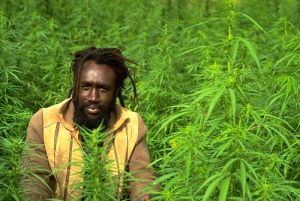Here are two things that happened to me last week.
First: I sent a message on my old condo’s listserv letting the residents know that I’ve set up a farm hub there, and that they can order fresh/local/etc. produce and meat directly from a farmer who’s not only local, but one that literally owns a unit in the building. A few days later, a non-profit CSA aggregator (a 501c3 non-profit) who apparently has a rep in the building, sent a nearly identical email out on the same listserv advertising a 10% early bird special on their CSA shares.
Second: I’m driving around Charlottesville delivering food and running errands, and everywhere I go, I see the delivery truck for an increasingly popular online grocery store whose name rhymes with “we lay crudes.” They weren’t following me of course; it was just sheer coincidence. But seeing that gigantic shiny green truck in the rearview of my 100,000-mile, farm-dusted F-150 for two hours was quite the visual metaphor for what local farmers determined to remain independent are up against.
Independent farmers committed to sustainable agriculture turned their backs on the ConAgras and Cargills of the world, determined to free themselves from poverty, debt, commodity pricing, and a litany of other unhealthy farming realities. Using farmers markets and door-to-door sales, they blazed a trail leading back to independence – they determined to take as close to100% of the food dollar as possible to secure the financial stability that’s necessary to steward the land properly without relying on government grants and other forms of ecological charity.
The rest of the world is understanding that this is a good thing. Dollars are quickly flowing into local/organic/sustainable and, just as quickly, well-intentioned organizations are springing up that threaten to erode the foundations of the Local movement. Here are three good reasons why you, as a consumer, should take the time to cultivate relationships with farmers and buy directly from them… and here’s why we, as farmers, need to do a much better job of direct marketing our products:
1. Centralization in agriculture is bad.
Modern agriculture is a hot mess. Giant corporations pay next to nothing for agricultural commodities produced by farmers whose financial incentive is to produce as much as possible at all costs. The corporations consolidate the commodities, process them, and then distribute them across the country and around the world. This system leaves the environment degraded, the farmer in poverty, and the consumer with an outrageously unhealthy diet and the manifold consequences thereof. Why are things this way?
Consolidators have investors to consider, so they must grow profits. To grow profits, they must reduce their costs. Consolidators – whether it’s Walmart or ConAgra – reduce their costs, and thus their prices, by squeezing their suppliers. The ability to do this comes, ironically enough, by enlisting more and more suppliers to service more and more customers. As these customers pile into the consolidators’ stores, they create an ever-strengthening vise that the consolidators use to squeeze their suppliers.
Eventually, a tipping point is reached where the consolidators have enough customers and suppliers to offer prices so low that suppliers can’t survive on their own. At this point, the consolidator owns the supplier, and the supplier begins making tradeoffs to meet the price set by the consolidator. For Walmart’s suppliers, this might mean closing American factories and sourcing the work to Asia to reduce labor costs. For ConAgra’s suppliers, this might mean using genetically modified seed and contracting to feedlots to reduce unit costs.
Online grocery stores, even the Local-oriented ones with the big green truck, are consolidators with investors to consider (that’s how they got the big green truck). Right now they’re fairly small and don’t have enough customers to force farmers to take their prices, but one day and with enough customers, they will. Perhaps they won’t apply the squeeze when they’re able, but capitalism’s record of self-restraint is not encouraging.
2. Government subsidies in agriculture are bad
Some CSA consolidators, like the one that’s more or less competing with me in my condo, are non-profits that operate with government grants, tax-deductible donations (another kind of government grant), and self-generated revenue. On its face, that may seem like a good thing: people like to think of sustainable agriculture as an enterprise too pure to be stained by the pursuit of profit, so going the non-profit route presents a pleasing image of donation-funded hippie farmers sitting above the earthly fray of markets. So what’s the problem?
Here are two things that the giant 1,000-acre GMO corn farmer and the 501c3 non-profit local CSA have in common: they are utterly dependent on government largesse. The corn farmer would be out of business tomorrow without the commodity payment and insurance programs in the Farm Bill, and the non-profit CSA would be out of business tomorrow without the tax-deductions allowed its donors and the ability to receive municipal/state/federal grants. This dependence has consequences.
The first consequence is volatility. Remember all the talk of milk prices doubling if the latest Farm BIll remained stalled in Congress? And if that non-profit CSA loses 50% of its government funding, they’re going to have to either fold the business or make up the difference at the register, either option promising to spike the prices of your CSA shares.
The second consequence is the artificial lowering of the price of food. Many non-profits use their donations and grants to reduce food costs at the register, usually to service low-income customers. While I absolutely agree that low-income individuals should have affordable access to food that’s fit to eat, I also believe that artificially lowering the price through subsidies is not the way to do it. If SNAP, WIC, or CSA grants get cut, low income folks are back to poisoning themselves with ramen noodles and Hot Pockets. Farmers should instead be working to lower the real price of food with things like multistory and closed-loop agriculture, perennial and locally-adapted systems, and a refusal to take on debt. That way, good food remains affordable no matter who’s in Congress. Government subsidies, however, remove the financial incentive to pursue these innovations, which leads to the third consequence, which is…
Opportunity cost. It’s very difficult for market-oriented, innovative, socially/economically/ecologically-sustainable, independent farms to get off the ground when their competitors are “juicing” on government funding. We know these utopian farms are possible – Sepp Holzer’s Krameterhof and Joel Salatin’s Polyface Farm being prime examples – but we’re going to see a lot fewer of them if we continue to believe that government money belongs in agriculture.
3. The solution is so much better
Consolidators, whether they’re government funded CSAs or investor funded online grocery stores, are not evil. They simply exist because they’re filling a niche that farmers have failed to fill ourselves. Local food is not as accessible as it should be, the farms producing the food are few and far between, and many of them aren’t oriented toward direct marketing off the farm itself. Any farmer knows that a bare patch of earth, left alone, will sprout a giant tap-rooted weed that will become almost impossible to deal with if it’s ignored for too long. Likewise, the need for convenience and accessibility in Local food is much like that patch of exposed earth; instead of nature filling it with pokeweed, capitalism is filling it with consolidators.
Changing this would require a massive proliferation of small farms, and the creation of farmer-owned cooperatives that could handle distribution beyond the farm – especially into cities. The reasoning is simple: if there are lots of farms everywhere then they are more accessible; farmers don’t have to take commodity prices and become slaves to the distributors if the farmers are the distributors.
Getting more farmers into the field and organizing cooperatives is going to take some work, and will become a focus of Sylvanaqua once our production is established, we’ve turned a small profit, and we’ve thuys demonstrated that this model of ours can, in fact, work. Stay tuned, stay positive, and buy direct from your local farmer!
Chris Newman
Manager, Sylvanaqua Farms









